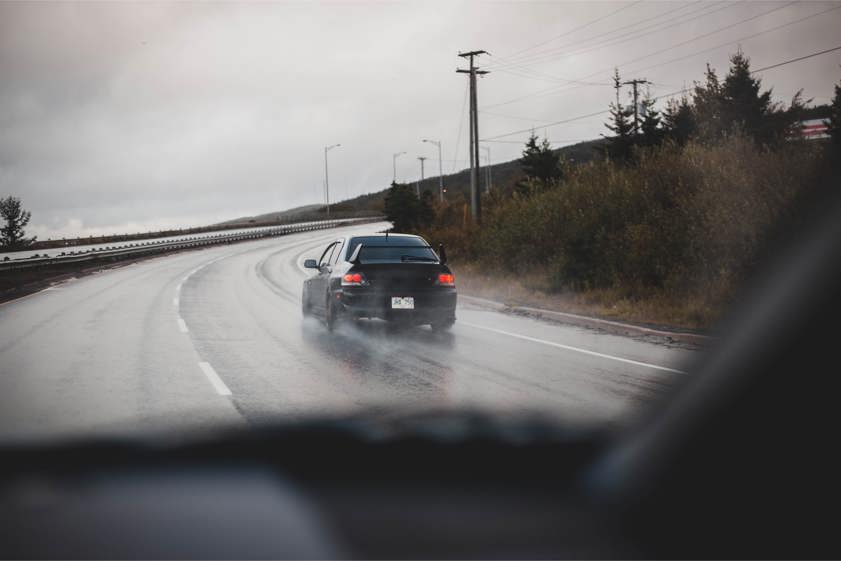
As the UK continues to face its fair share of wet weather, navigating slick roads can become quite the challenge. It’s a scenario we’re all too familiar with, yet it's surprising how many of us are caught off-guard by the perils of driving in the rain each year.
With statistics revealing that 90% of weather-related road deaths and serious injuries occur in rainy conditions, the importance of driving cautiously cannot be overstated.
To help you tackle these challenges with confidence, Nationwide Vehicle Contracts has curated a list of six essential tips for safe driving in wet weather, including:
Whether you’re a daily commuter or a weekend adventurer, these insights are designed to empower you with the knowledge needed to navigate rain-soaked roads safely.
The safest option during severe storms? Stay put if you can. The wisdom of the old adage, "It’s better to arrive safely than not at all," really shines through here. Before deciding to drive, ask yourself if your trip is essential. Can it wait until the storm passes? If you can afford to wait to drive until the storm has passed, then do.
If caught in a severe storm while driving, look for safe places to pull over, such as service stations, until conditions improve. It’s a small pause that can make a big difference.
Don’t let the British weather catch you off guard. A bit of preparation can go a long way in ensuring your safety. Don’t be caught out in torrential rain regretting that you neglected simple weather solutions! Start with the basics:
- Check your windscreen wipers: Make sure they’re in working order and remember that they need to be replaced at least once a year to ensure maximum efficiency.
- Check your tyre tread: By law you are expected to have a minimum tread depth of 1.6mm, so ensure you have that as a minimum. Tread is there to disperse water in exactly these conditions, so this is important for maintaining control of your vehicle.
- Check your heating: Make sure your heater works. It’s not just to keep you warm in the winter, it also works to clear the mist from the inside of your car’s windows.
Adopting a defensive driving approach is particularly wise in wet weather. Inclement weather can see even the best drivers unexpectedly lose control of their vehicle. To avoid this, keep an extra firm grip on the wheel and be extra gentle with your breaks, suddenly braking is a sure way to slip off course. Remember, it’s okay to drive below the speed limit in poor conditions.
“Safety on wet roads isn't just about how well you drive; it's about how well you react to the unexpected. Slowing down, maintaining a safe following distance, and knowing how to react if your vehicle begins to aquaplane are crucial skills.”

Reduced visibility in the rain means adjusting your driving style is a must. Turning on your dipped headlights, even if it’s daylight so that other drivers can see you, can make a significant difference in being seen by other drivers. Make sure they’re dipped beams though, not your full beam fog lights or you could risk dazzling other drivers. Don’t forget to slow down and maintain full control of your vehicle, especially in moderate to heavy rain.
Larger vehicles pose an increased risk when visibility decreases. Just because you might see them, doesn’t mean they’re able to see you. Be extra aware of the space around you, especially when near lorries or buses. Make sure to stay visible and double the two-second rule to maintain a safe distance, giving you and others more space to react.
Wet weather inevitably causes water to collect on the roads and can cause minor flooding even after a brief bout of bad weather. Avoid driving through any standing water as, although it may appear shallow, you have no idea how deep the water level could be or what condition the road underneath is in.
Driving through puddles also puts you at serious risk of aquaplaning. This is where water builds up between the tyre and the road beneath. This could result in your tyres losing traction and grip and you could find yourself unable to steer, brake or accelerate.

Armed with these tips and a proactive approach, you can significantly reduce the risks associated with wet weather driving. It's not just about reaching your destination but doing so safely.
For more resources on navigating wet weather driving challenges, check out:
Together, let’s pledge to be better prepared, driving safely and smartly, whatever the weather may bring.

